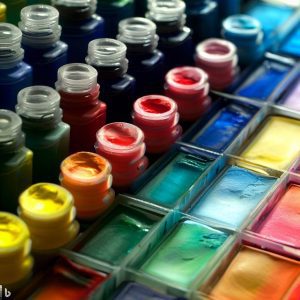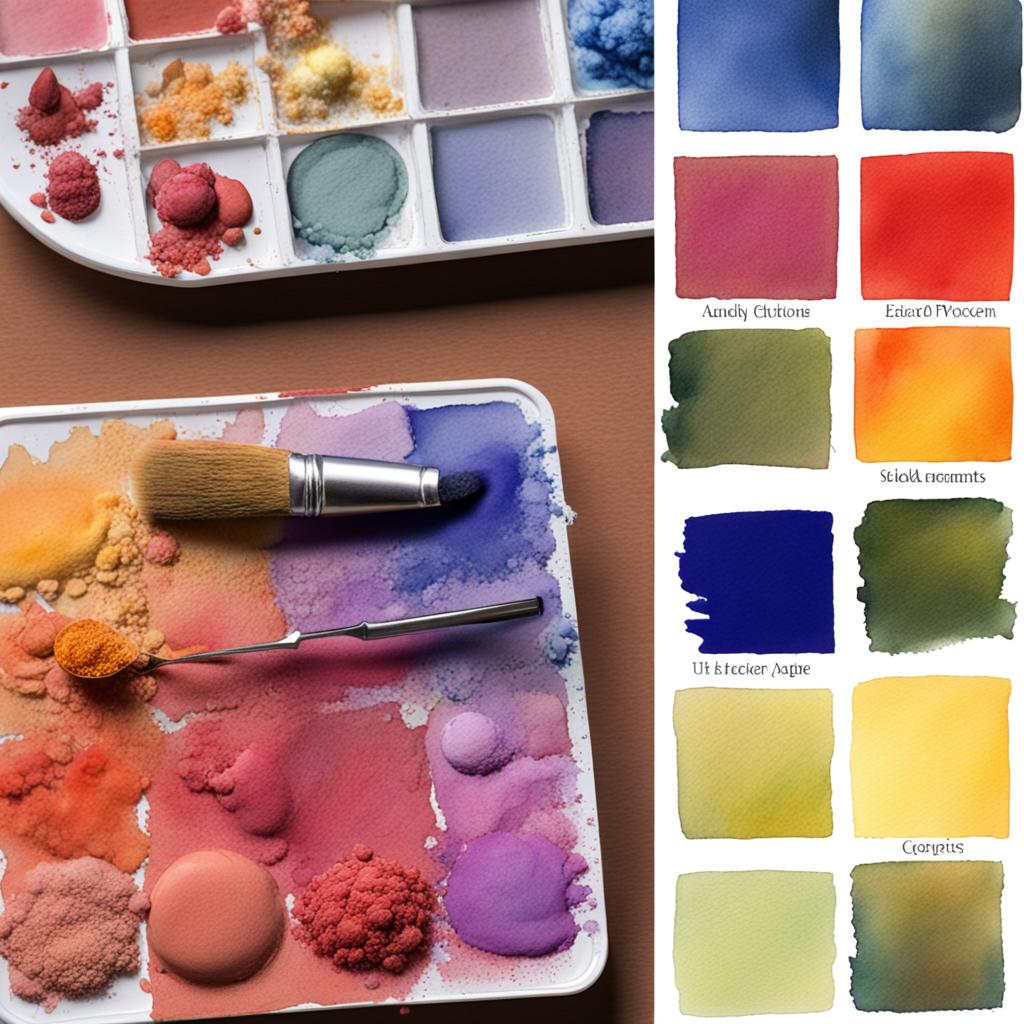Watercolor painting is a beautiful and versatile medium that requires some safety precautions to ensure the artist’s well-being and the longevity of the artwork.
10 Watercolor Safety tips every artist should know

- Use non-toxic paints: Some pigments used in watercolor paints can be toxic if ingested or inhaled. Artists should avoid using toxic pigments such as cadmium and cobalt and opt for non-toxic paints instead.
- Ventilate your workspace: Watercolor paints can release fumes that can be harmful if inhaled. Artists should ensure that their workspace is well-ventilated to avoid breathing in these fumes.
- Wear gloves: Some artists may be allergic to certain pigments or chemicals used in watercolor paints. Wearing gloves can help prevent skin irritation or allergic reactions.
- Use a mask: If an artist is working with pigments that can release harmful dust or fumes, they should wear a mask to avoid inhaling these particles.
- Use a dedicated workspace: Artists should have a dedicated workspace for their watercolor painting to avoid cross-contamination with other materials or chemicals.
- Use proper lighting: Adequate lighting is essential for watercolor painting. Artists should ensure that their workspace is well-lit to avoid eye strain or headaches.
- Use proper storage: Watercolor paints and brushes should be stored properly to avoid damage or contamination. Paints should be kept in a cool, dry place, and brushes should be stored with their bristles facing up.
- Use proper paper: Watercolor paper is specifically designed to handle the wetness of watercolor paints. Using regular paper can cause the paper to buckle or warp, affecting the quality of the artwork.
- Use proper brushes: Watercolor brushes are designed to hold and distribute watercolor paints effectively. Using the wrong type of brush can affect the quality of the artwork.
- Clean up properly: After painting, artists should clean their brushes and workspace properly to avoid contamination or damage to their materials.
By following these ten watercolor safety tips, artists can ensure their well-being and the longevity of their artwork.
Watercolor Material Hazards
However, here are some of the most common watercolor painting hazards and how to avoid them with watercolor safety tips:
| Hazard | Safety Precautions |
|---|---|
| Toxic pigments | Choose the least toxic pigments possible and avoid using lead-containing or carcinogenic pigments. Refer to the Material Safety Data Sheets (MSDS) to find out what pigments they are using. |
| Fumes | Ensure that the workspace is well-ventilated and wear a mask if necessary. |
| Skin irritation | Wear gloves to prevent skin irritation or allergic reactions. |
| Eye strain | Ensure that the workspace is well-lit to avoid eye strain or headaches. |
| Improper storage | Store watercolor paints and brushes properly. Keep paints in a cool, dry place, and store brushes with their bristles facing up. |
What are the most Toxic Pigments to Avoid in Watercolor Painting?
Watercolor painting is generally considered a safe medium, but some pigments used in watercolor paints can be toxic if ingested or inhaled. Here are some of the most toxic pigments to avoid in watercolor painting:
- Cadmium: Cadmium is a heavy metal that can cause lung and prostate cancer. It is commonly used in red, yellow, and orange pigments.
- Cobalt: Cobalt is a metal that can cause lung and heart problems. It is commonly used in blue and green pigments.
- Lead: Lead is a toxic metal that can cause brain damage and other health problems. It is commonly used in white pigments.
- Chromium: Chromium is a metal that can cause lung cancer. It is commonly used in green and yellow pigments.
- Nickel: Nickel is a metal that can cause lung cancer and skin allergies. It is commonly used in yellow pigments.
To avoid these toxic pigments, artists should choose the least toxic pigments possible and avoid using lead-containing or carcinogenic pigments. They should also refer to the Material Safety Data Sheets (MSDS) to find out what pigments they are using.
By following these watercolor safety tips, artists can ensure their well-being and the longevity of their artwork.


